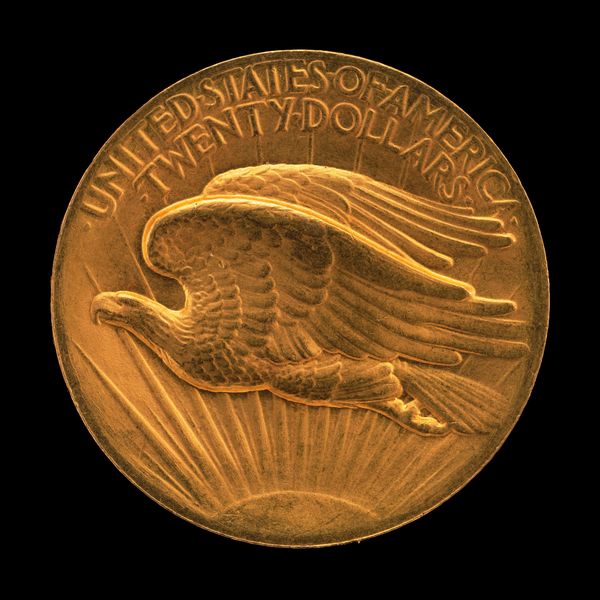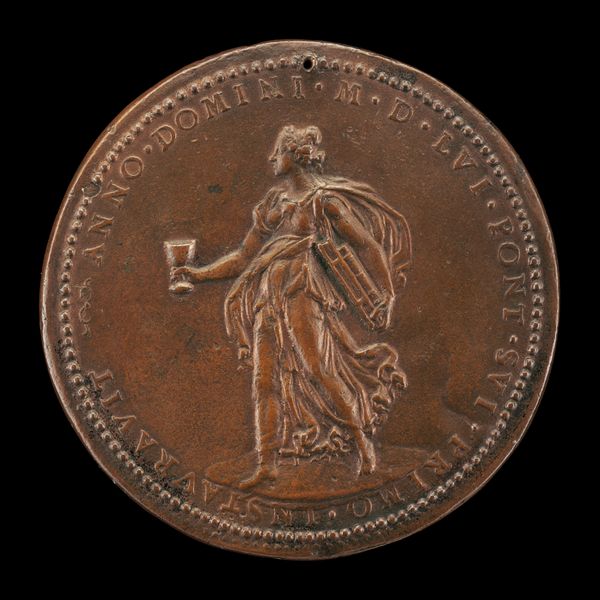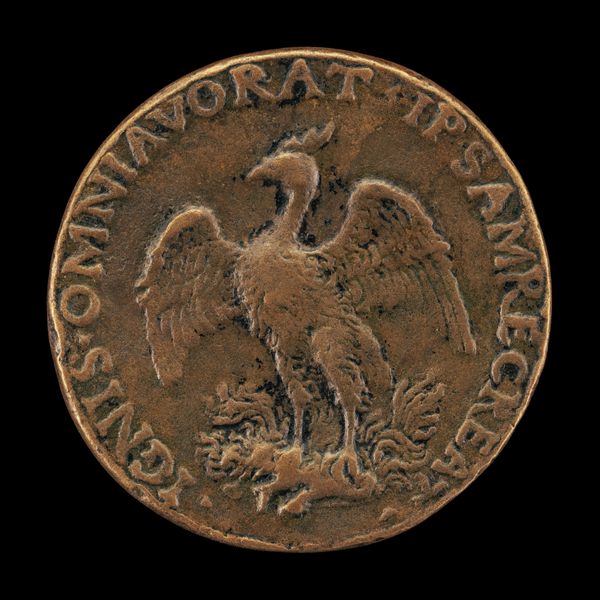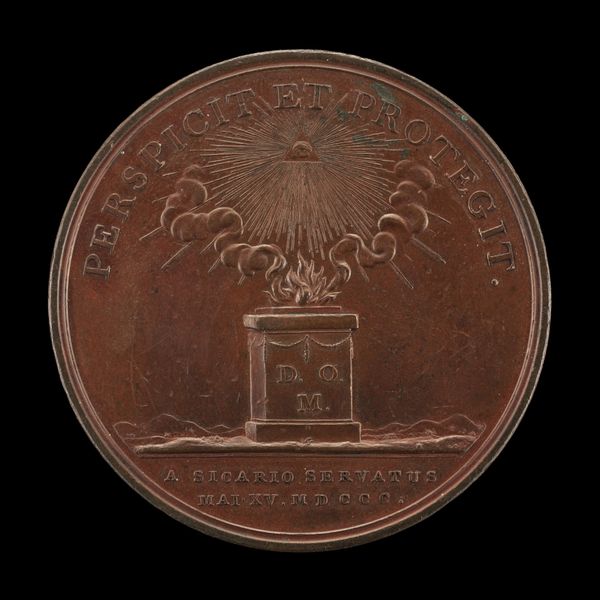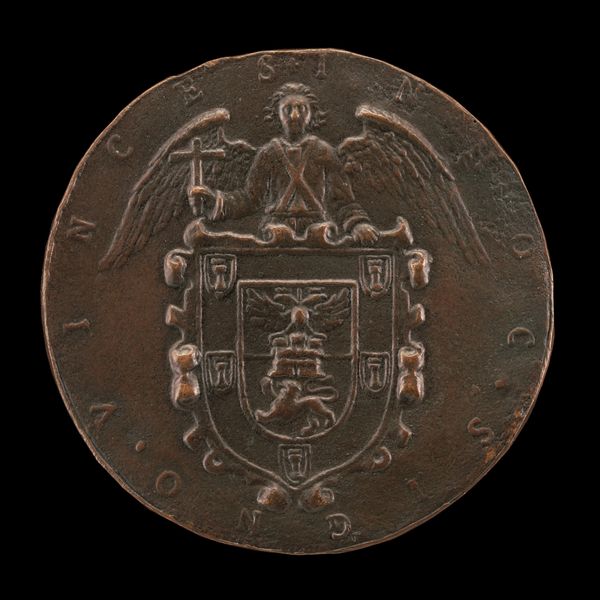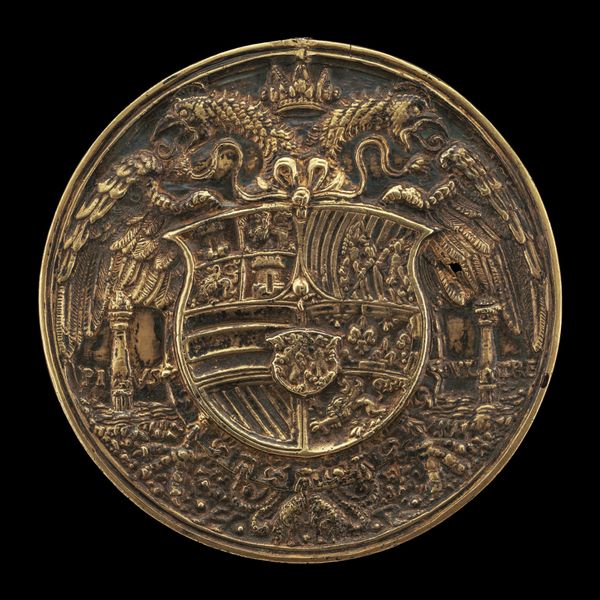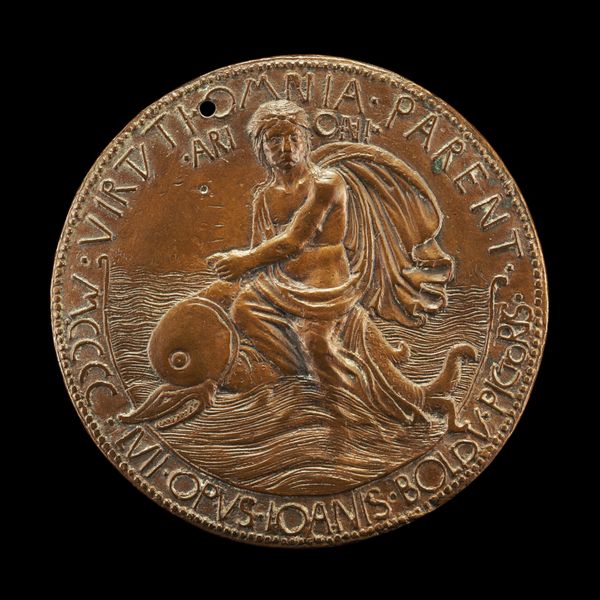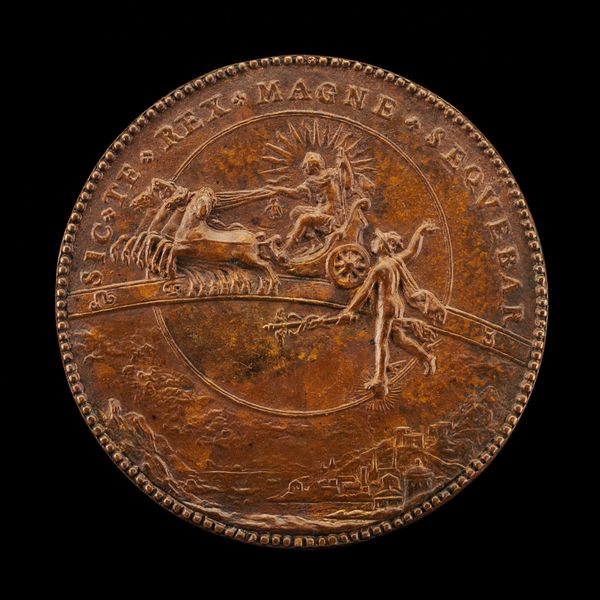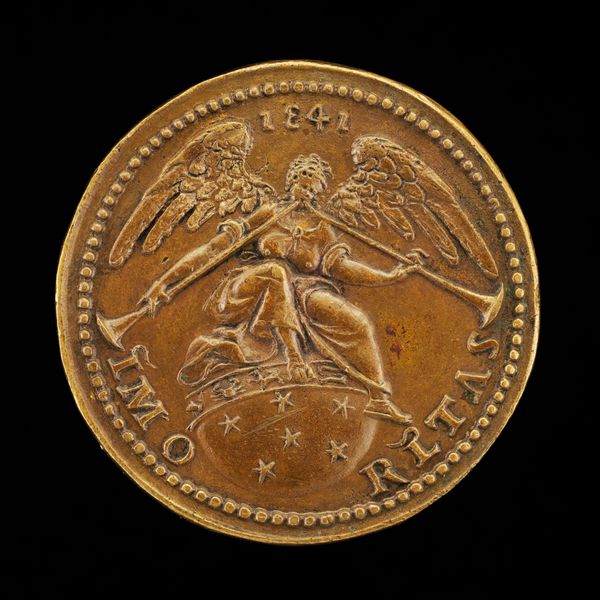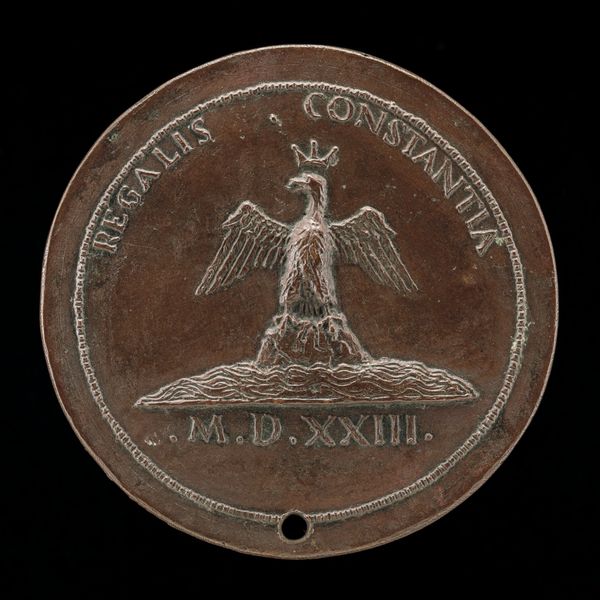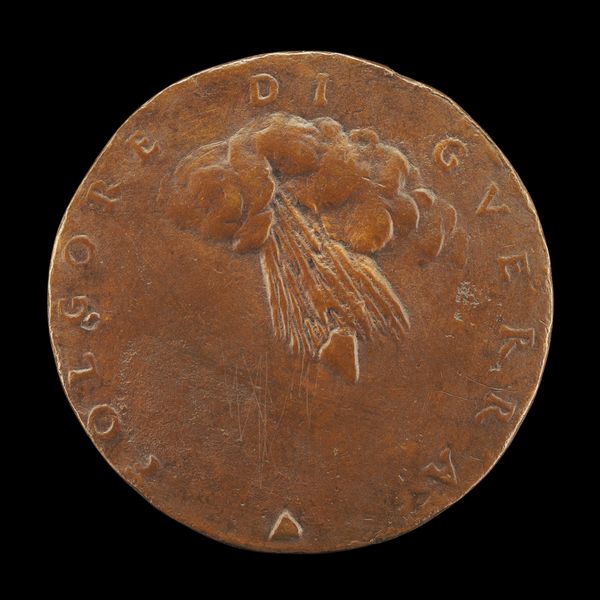![Pelican in Her Piety [reverse] by Andrea Guacialoti](/_next/image?url=https%3A%2F%2Fd2w8kbdekdi1gv.cloudfront.net%2FeyJidWNrZXQiOiAiYXJ0ZXJhLWltYWdlcy1idWNrZXQiLCAia2V5IjogImFydHdvcmtzL2MyOGY5YmI3LWJlYzQtNDc1Yy1iMDBkLTQxZGU4ZTUzM2YzMC9jMjhmOWJiNy1iZWM0LTQ3NWMtYjAwZC00MWRlOGU1MzNmMzBfZnVsbC5qcGciLCAiZWRpdHMiOiB7InJlc2l6ZSI6IHsid2lkdGgiOiAxOTIwLCAiaGVpZ2h0IjogMTkyMCwgImZpdCI6ICJpbnNpZGUifX19&w=3840&q=75)
relief, bronze, sculpture
#
portrait
#
medal
#
sculpture
#
relief
#
bronze
#
11_renaissance
#
sculpture
#
history-painting
Dimensions: overall (diameter): 5.4 cm (2 1/8 in.) gross weight: 46.18 gr (0.102 lb.) axis: 6:00
Copyright: National Gallery of Art: CC0 1.0
Curator: So, here we have "Pelican in Her Piety [reverse]," a bronze relief likely dating from sometime between 1458 and 1464. Editor: My first thought is that it feels almost… brutal, despite the circular, contained shape of it. That pelican looks fiercely committed. Curator: That perceived brutality can be linked to the symbology around the pelican in its piety. It stems from the medieval belief that the pelican would wound its own breast to feed its young with its blood. In Christian iconography, this image directly represents Christ’s sacrifice on the cross for humanity’s salvation. The medal thus ties ideas of power and sacrifice. Editor: Wow. Knowing that really adds a layer. It’s one thing to see a bird feeding its young— which is tender enough—but self-inflicted feeding? A complete reimagining of the parental instinct. Did this Andrea Guacialoti fellow produce many works like this? Curator: We have to look at the cultural and historical importance of symbols during the Renaissance. A deeper engagement with classical texts saw a resurgence of interest in symbolism. The Pelican was popular in heraldry, but it also appears repeatedly within religious art, as this medal reflects. Medals served multiple functions; in this instance it memorializes familial themes that were significant to elite families of the period. These objects provided space to blend the personal with the broader social narrative. Editor: So, it's not just some random image they plucked from thin air; it's loaded with meaning, speaking volumes to those in the know. This medal shrinks big themes like faith and sacrifice, which might feel remote, and packages it into something domestic and intensely private. The artistry and ideas both have incredible weight and are grounded here. Curator: Exactly, it’s about power, faith, and family intertwined within a single, carefully designed object. Examining the work allows a better understanding of not only Renaissance art practices but the complex negotiation of political and religious ideologies in society. Editor: It does prompt quite a bit of thought for such a small bronze! This piece serves as a beautiful and sometimes violent reminder of those values. Curator: Indeed, an object dense with meaning reflecting its historical context.
Comments
No comments
Be the first to comment and join the conversation on the ultimate creative platform.
